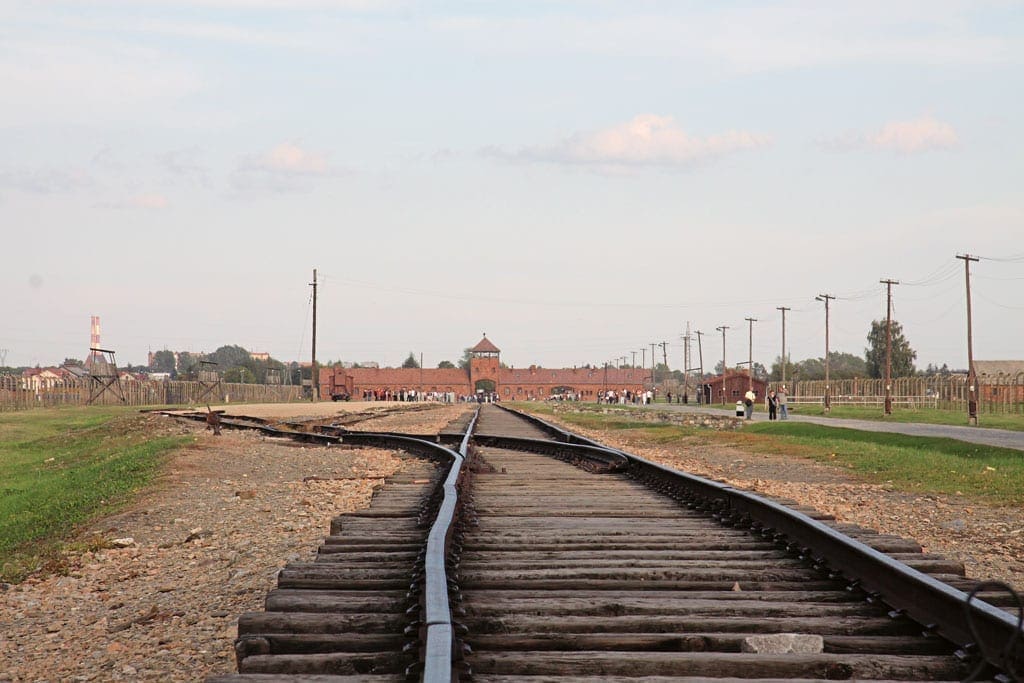
Today marks Holocaust Memorial Day, 75 years since 27 January 1945, when Soviet troops entered and liberated the Auschwitz death camp.
The darkest episode in the history of world railways undoubtedly centres around the role they were forced to play in the transport of civilians to Nazi death camps during the Second World War.
In what has become known as the ‘Holocaust’, millions of people were killed on an industrial scale. Almost all were transported by train.
Shortly after Hitler’s anti-semitic regime came to power in Germany in 1933, jobs in many government departments, including the German State Railways (Deutsche Reichsbahn) were closed to people of Jewish descent.
Between 1942 and 1943, at least 1.7million people were mass-murdered in three camps established specifically to kill Jews.
Just before the outbreak of war, many Jewish children were sent from Germany to live abroad by parents who could not get visas for themselves. These ‘Kindertransports’ took some youngsters to the UK via the Hook of Holland to Harwich ferry – and a monument at London’s Liverpool Street station commemorates the special trains that saved thousands from an uncertain future.
Sir Nicholas Winton, a British national who saved more than 650 children from Prague, had his efforts commemorated by the ‘Winton Train’ main line charter in 2009.
‘An industrial scale’
In June 1941, German forces invaded the USSR and rapidly occupied much of western Russia, Ukraine, Belarus and the Baltic republics. Three months later, German and Austrian Jews began to be sent by train to Riga and other locations in the Baltic republics and Belarus, where most were put to death almost immediately.
The SS security service then began to build concentration camps with gas chambers specifically designed to kill on an industrial scale. These were located in Poland and were chosen to be near main railway lines to enable rapid transportation of victims from across Europe. Auschwitz, for example, in the Polish town of Oswiecim, was a junction on the main line from Krakow to Prague.
Between 1942 and 1943, at least 1.7million people were mass-murdered in three camps established specifically to kill Jews.
The period just before and after the Normandy D-Day landings was one of the most intensive with 434,351 Jews transported to Auschwitz on 147 trains from Hungarian stations between May 15 and July 9, 1944, following the German occupation of Hungary in March 1944. From the occupied Netherlands, trains ran from a transit camp at Westerbork, northeast of Zwolle, to Auschwitz.
Windowless boxcar vans
Where the trains were going was not a secret, what would happen to the passengers was. (They were told they were being “resettled in the east”). Deutsche Reichsbahn not only received payment for transporting millions of people to their deaths, but it took a percentage from the one-way tickets sold to the SS at discounted group fares on these so-called ‘charter trains’. Most used windowless boxcar vans – designed originally for livestock or dry cargo – although some of those from western Europe used passenger coaches.
Food and drink for the journey was normally insufficient or non-existent and by the time the trains arrived at their destination, many passengers were already very weak or even dead.
The number of passengers carried varied from about 1,000 on some long-distance trains to 5,000 on shorter routes, e.g. from Warsaw to Treblinka. Trains that returned empty (which most did) were not charged for and those that carried freight out of the camp (largely stolen possessions) were charged at freight rates.
Even though most of Europe was in the hands of the Germans, the deportation trains were operated by whichever rail operator they were travelling on – so trains from Compiegne and Drancy, in France, were worked by SNCF to the German border, where DR took over, trains from Hungary by MAV and so on.
Poland, where the death camps were all located, was mostly administered as a separate area and the railways were run by the Ostbahn (East Railway), largely using former Polish State Railways rolling stock and employees, but with German management.
The SS went to great lengths to avoid information about what was being done in the camps spreading to the outside world via railway staff; so once trains had reached the area, they would be halted and then later be shunted into the camp sidings by German or SS personnel to avoid loco crews seeing what was going on.
Nevertheless, some Polish railway workers managed to keep secret records. All trains run under German supervision had detailed passenger lists and the majority of these also survived the war, enabling historians to say with certainty who was deported and when. Belgium was the scene of an (only partially successful) attempt by resistance fighters to stop a deportation train from Mechelen to Auschwitz in order to free those on board in April 1943; the only time this happened anywhere in Europe.
Role of railways ignored?
For half a century after the war, the role of the railways in deporting hundreds of thousands of people was largely ignored by the rail operators in Germany itself, but plans by DB in the mid-1990s to demolish the part of Berlin Grunewald station from which thousands were deported to their death led to public protest and in 1998 DB inaugurated instead a formal memorial on the site.
Today, in the UK, a ceremony to mark Holocaust Memorial Day attended by the Duke and Duchess of Cambridge will take place in Westminster.
Also to mark Holocaust Memorial Day, the Duchess has taken photographs of Holocaust survivors in a contribution to an exhibition marking 75 years since the end of the genocide.


